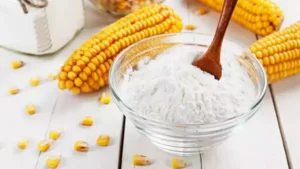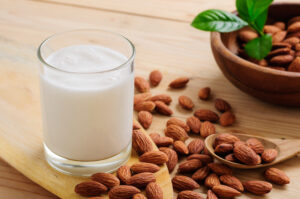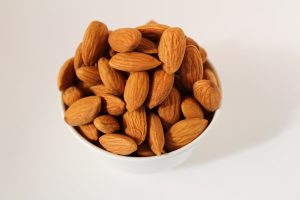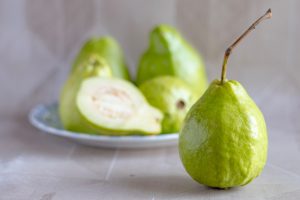Introduction
The years between your 30s and 50s are when you’ll start to feel the effects of aging. You might want to start thinking about your workouts now so that you’re ready for all the new challenges as you get older. Here are some exercises that will help strengthen bones, increase bone density and prevent osteoporosis.
Pre-50s
If you’re looking for ways to stay healthy and active in your 30s, 40s and 50s, there are plenty of options.
Here are some exercises that can help:
- Strength training: This type of exercise builds muscle mass, which will make you stronger overall. It also improves balance and coordination.
- Cardio: Cardio burns more calories than strength training, but it also has other benefits such as increasing blood flow throughout your body (which can reduce stress), improving digestion and reducing belly fat.
- Yoga/Pilates: These types of workouts focus on stretching out tight muscles so they don’t get sore when doing other activities later on in life.
Strengthen Your Bones
If you’re in your 30s, 40s or 50s, it’s important to keep your bones strong. Bone health is determined by the amount of calcium and vitamin D that you take in, as well as how much exercise you get. It’s also important to avoid osteoporosis (a disease in which a person’s bone density weakens), which can lead to fractures if left untreated. If this sounds like something you’d like to avoid—and if so, there are many ways for people at any age range who want stronger bones:
- Take calcium supplements every day (1). Calcium has been shown over time to help prevent fractures from occurring when used consistently throughout life. This means taking calcium supplements will help keep bones healthy into old age!
- Eat foods rich in vitamin D (2). Vitamin D helps regulate how much calcium gets absorbed into your body cells so they can be properly used by them instead of turning into fat or other types of tissue instead.* Exercise regularly! Studies have shown that regular exercise helps strengthen muscles around joints such as hips/knees/elbows; this makes them less likely break under pressure during everyday activities like walking down stairs without stopping first.”
Prevent Osteoporosis
Osteoporosis is a condition that can lead to the loss of bone mass and an increased risk for fractures. If you’re over 50 years old, it’s important to maintain your calcium intake so you don’t put yourself at risk for osteoporosis later in life.
The recommended daily intake (RDI) of calcium is 1,000 milligrams per day for men; 1,200 milligrams per day for women; and 1,500 milligrams per day for older adults over age 50 years.
When trying to prevent osteoporosis in men and women alike, it’s important to make sure you’re getting enough calcium each day by eating plenty of fruits and vegetables as well as foods high in vitamin D like salmon or tuna fish topped with avocado slices!
Increase Bone Density
Bone density is one of the most important aspects of maintaining good health for your 30s, 40s and beyond. It’s important to build healthy bones because they support your body weight, protect joints and keep you upright.
Weight-bearing exercises are an excellent way to increase bone density as well as strength in the lower body. Examples include walking, jogging or running stairs (without holding on). The American College of Sports Medicine recommends that adults perform 150 minutes per week of moderate-intensity aerobic activity such as brisk walking or playing tennis at around 75% of their maximum heart rate (alternatively called “cardiovascular” exercise). A good rule of thumb: If you lift weights five times a week then do some form of weight training at least once a day too!
Do Weight-Bearing Exercises
Weight-bearing exercises are good for your bones, muscles and joints. They can be done at home or in a gym.
- Weight-bearing exercises help strengthen your bones by making them more dense and strong. This means that you’ll have less risk of fractures as you age.
- Weight-bearing exercises also help prevent osteoporosis (a condition where the bones become thinner). If a bone becomes too thin or weak, it may break easily when someone is injured from being hit with an object like a baseball bat or golf club—or even during everyday activities like walking across the street without looking where they are going! This happens because there aren’t enough nutrients getting into those areas which causes inflammation which prevents healing properly so now instead of repairing itself naturally over time like other parts do; instead now we need surgery like implants etcetera just so we can keep living normally until things heal up completely again later down road after years worth more treatments given each year until finally one day everything looks normal again…
50s And Older
As you get older, your muscles are more likely to sag and lose their shape. Stretching is an important part of maintaining flexibility, balance and strength in your body. Yoga can help you relax after a hard day at work or school. Weightlifting will help build muscle mass as well as burn calories so that you can keep fit for longer. Running is another great way for seniors to stay active without straining themselves too much on each step they take! Swimming is also an excellent way for those over 50 years old who have joint problems caused by osteoarthritis (OA) or rheumatoid arthritis (RA).
Keep Moving
Keeping moving is important for all ages, but it’s especially important for your body in your 30s, 40s and 50s. In fact, you might find that you need to do more physical activity as you get older.
Stretching and balance exercises will help keep your muscles flexible and prevent injuries from happening by keeping the joints loose. These can be done at any point throughout the day (even when driving), so don’t wait until after work or school ends!
Walking is a great way to stay active without having to go anywhere—just hop out on the sidewalk outside your house or apartment building with some friends (or alone) and walk around while enjoying nature’s beauty around here too!
Try Something New
It’s a great idea to try something new. Not only will it help you feel more energized and excited about your workouts, but also it can help make your 30s, 40s and 50s even better!
Try something that has always been on your bucket list or something that has been suggested by friends or family members who have been through similar phases in life. There are many different ways to approach this exercise plan: try one activity at a time if necessary (for example, start with walking instead of running) or go big by incorporating all kinds of physical activity into their day-to-day activities like biking/running outside on trails with friends/family members etc..
Stretch And Balance
Stretching is an important part of your exercise routine, but it’s also important to do when you aren’t exercising. You should stretch before and after every workout, as well as at other times throughout the day.
Stretching helps you maintain flexibility and balance in different parts of your body so that when you get out into the world, everything will feel better than before!
To help with this, here are some stretches that are easy to do on their own or together:
- Sitting cross-legged on the floor (or sitting up straight) with legs stretched out in front of you
- Lying down flat on the floor (with knees bent), feet flat against each other; reach arms toward opposite sides until they form an “L” shape
These are just a few examples; there are plenty more options available online if needed! Remember: stretching shouldn’t hurt too bad—just keep going until it feels comfortable enough not feel like punishment anymore 🙂
You need to keep moving as you get older.
Studies show that people who exercise regularly are more likely to live longer, have a lower risk of heart disease, and even experience fewer symptoms associated with depression.
As time goes on, your body will need more calories to maintain itself—and this means there’s an increased demand for protein in particular. In fact, if you’re following a healthy diet plan and exercising regularly (at least three times per week), it’s likely that by age 50 or so your body will require about 60 percent more energy than at 20 years old. This increase coincides with the fact that during middle age we start carrying around extra weight due to increased muscle mass and bone density. It also means we need more protein than before because our kidneys need help processing it—which means eating more animal products!
Conclusion
It’s never too late to start doing the things you love and keep moving as long as possible. And don’t forget: no pain, no gain!








